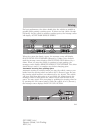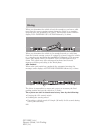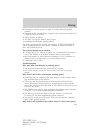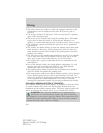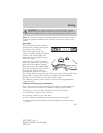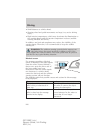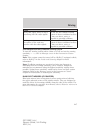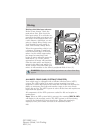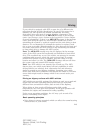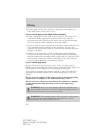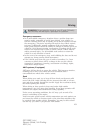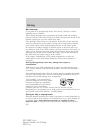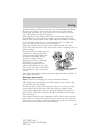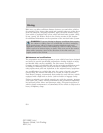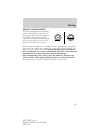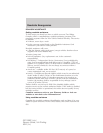
If your vehicle is equipped with AWD, a spare tire of a different size
other than the tire provided should never be used. If the spare tire is
installed, the AWD system may disable automatically and enter
front-wheel drive only mode to protect driveline components. This
condition may be indicated by an AWD OFF message in the message
center (see Message center section in the Instrument Cluster chapter
for more information). If there is an AWD OFF message in the message
center from using the spare tire, this indicator should turn off after
reinstalling the repaired or replaced normal road tire and driving a short
distance. It is recommended to reinstall the repaired or replaced road
tire as soon as possible. Major dissimilar tire sizes between the front and
rear axles could cause the AWD system to stop functioning and default
to front-wheel drive or damage the AWD system.
Note: The AWD OFF message may also be displayed in the message
center if the AWD system has overheated and defaulted to front-wheel
drive. This condition may occur if the vehicle was operated in extreme
conditions with excessive wheel slip, such as deep sand. To resume
normal AWD function as soon as possible, stop the vehicle in a safe
location and allow it to idle. The AWD OFF message will turn off when
the system cools and normal AWD function returns.
Note: Your AWD vehicle is not intended for off-road use. The AWD
feature gives your vehicle some limited off-road capabilities in which
driving surfaces are relatively level, obstruction-free and otherwise
similar to normal on-road driving conditions. Operating your vehicle
under other than those conditions could subject the vehicle to excessive
stress which might result in damage which is not covered under your
warranty.
Driving on slippery surfaces with AWD vehicles
AWD vehicles are specially equipped for driving on sand, snow, mud and
rough roads and have operating characteristics that are somewhat
different from conventional vehicles, both on and off the highway.
When driving at slow speeds off-highway under high outside
temperatures, use a low gear when possible. Lower gear operation will
maximize the engine and transmission cooling capability.
Under severe operating conditions, the A/C may cycle on and off to
protect overheating of the engine.
Basic operating principles
• Drive slower in strong crosswinds which can affect the normal steering
characteristics of your vehicle.
Driving
249
2011 MKS (mks)
Owners Guide, 1st Printing
USA (fus)



